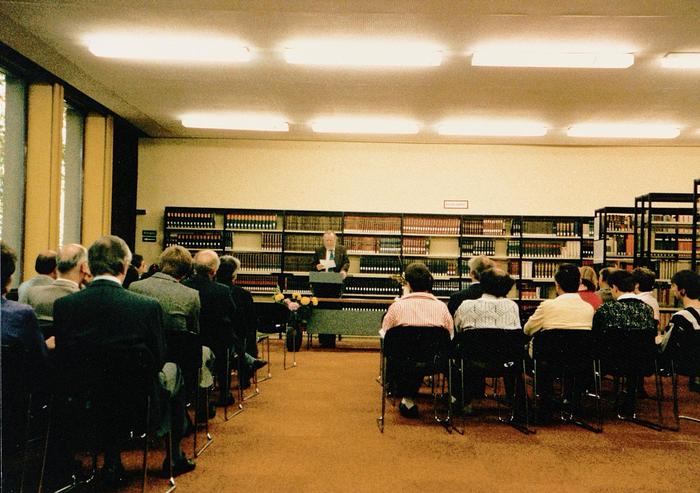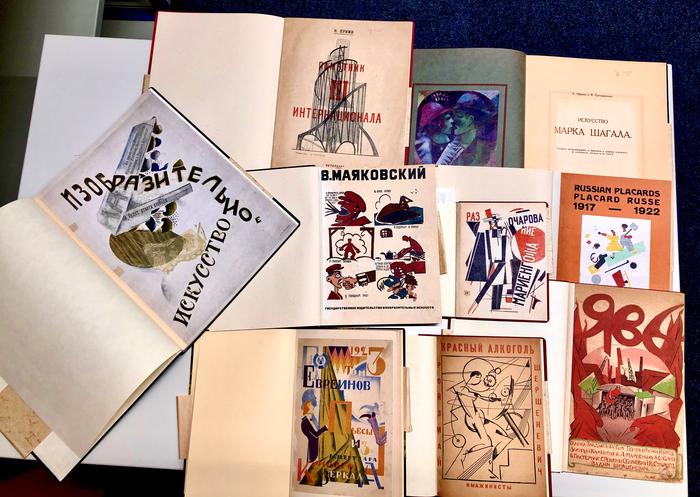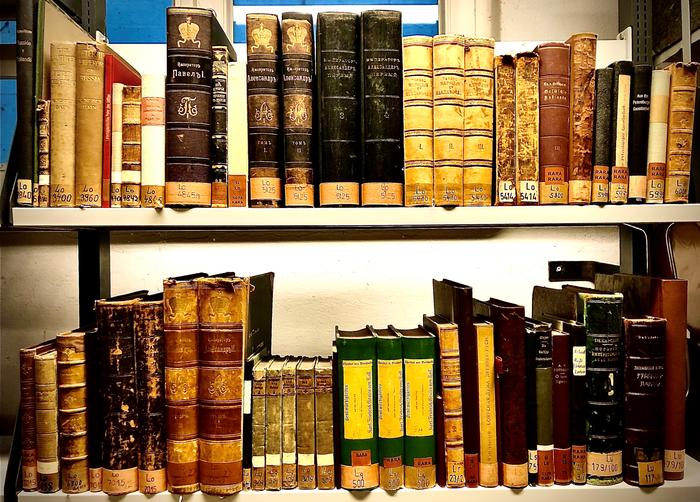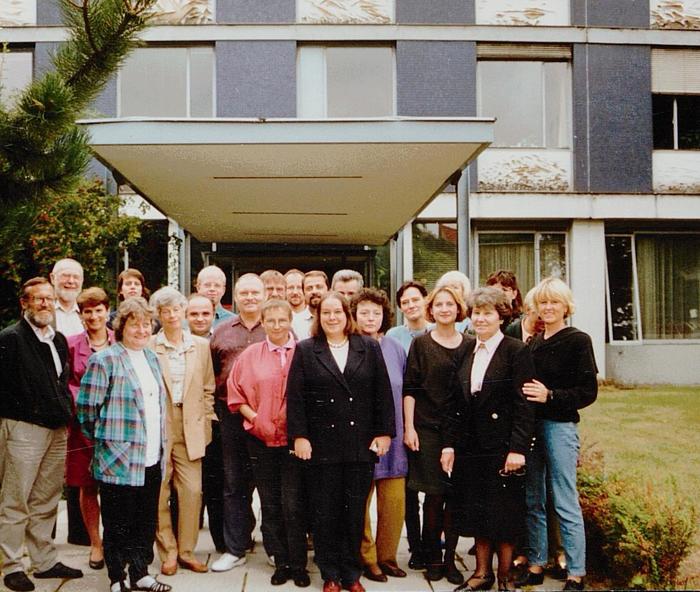Bibliothekschronik

Opening of the Bibliographic Reading Room on 14.10.1987
-
1951 Foundation of the Institute for Eastern European Studies with initially four departmental libraries at Ehrenbergstraße 35
-
1956 Foundation of the Union Catalog by Wolf-Günther Contius
-
1961 Relocation to Garystraße 55
-
1979 Completion of the library annex
-
1989 Completion of the integration process of 14 departmental libraries into the "Library of the Institute for Eastern Europe
-
2008 Merger with four other institute libraries to form the "Library for Social Sciences and Eastern European Studies
-
2010 Reconstruction and renovation of the library annex
On the final stretch to the institute's library

A small selection of Russian books (Silver Age)
With the founding of the institute-wide union catalog in 1956, librarian Wolf-Günther Contius took the first step toward the later consolidation, which was not completed until 33 years later under Peter Bruhn. Bruhn, a Slavic scholar and librarian, initially worked as a research assistant at the Institute for East European Studies. In 1970, he founded the Documentation Center for Literature from and about Eastern Europe, thus ensuring that the scholarly diversity of Eastern Europe was made comprehensively accessible to the German public. Printed book catalogs play an indispensable role for students, researchers, and teachers in a time when knowledge is mainly bound to paper. With the establishment of the Regional Science Database for Russia, the USSR, and successor states (approx. 170,000 records for the period 1974-2003), which is today partly freely searchable on the Internet, Bruhn later does pioneering work on the way to the digitized world.
In 1961, the Institute for East European Studies moves to its current location at Garystraße 55. In 1979, the library annex is completed with a spacious open access area, open stacks, and bright reading rooms. In the same year, after seven years of deliberation, the Academic Senate approves the merger of the departmental libraries. As the new head of the library, Peter Bruhn takes over the final steps on the way to the joint library of the Institute of Eastern Europe in 1982.

A small section of the rare stock
The joint institute library continues to take shape in 1982: By resolution of the Institute Council, it now bears the name "Library of the Institute for Eastern Europe". It is given the library seal B 865 as an individual mark of ownership.
On October 14, 1987, the Bibliographic Reading Room is officially opened and the library is officially inaugurated. With the arrival of the departments of Balkanology and Slavic Studies in 1989, the integration process that had begun in 1956 finally reached its goal: the merging of 14 specialist libraries with a connection to Eastern Europe into a functional, spatially attractive institute library for interdisciplinary Eastern European studies with a stock of almost 400,000 media.
One plus four ... equals one!

Library team 1991 in front of the Osteuropa-Institut, Garystr. 55
Just as the knowledge contained in books is constantly evolving, the spaces associated with these books are also subject to constant dynamics: in 1999, during a restructuring of the FU library landscape, the library of the Institute of Eastern European Studies is assigned to the area to which the libraries of the Department of Political and Social Sciences also belong. In 2006, the Slavic Studies holdings are transferred to the Philological Library.
In 2008, little-used parts of the collection were moved to an external storage facility, and the four libraries of the political and social science institutes moved into the rooms. Thus, the "Library for Social Sciences and Eastern European Studies" is created, which, in addition to the Institute for Eastern European Studies, supplies the subjects of Political Science, Journalism and Communication Studies, Sociology, and Social and Cultural Anthropology with literature. In 2010, the library annex will be rebuilt and renovated. The new acquisitions from all subjects are now arranged thematically in the open access area.
Today, the library has a total collection of almost one million conventional and electronic media, of which about 300,000 are in the Eastern Europe Collection - still one of the largest special collections on Eastern Europe in Germany. In addition to its rooms at the Institute for Eastern European Studies and the Otto Suhr Institute for Political Science, the library also offers extensive electronic information services. Thus, despite all the changes, it continues to live up to the claim formulated by the Balkanologist Norbert Reiter at the opening: